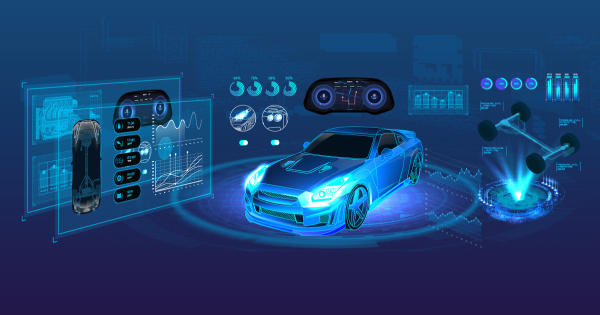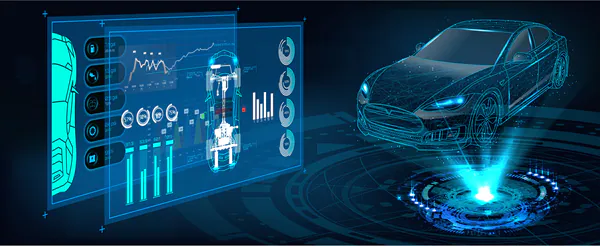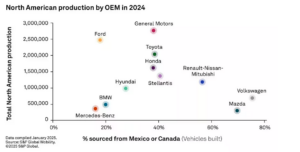Software Defined Vehicles: Reshaping the Road with Code


The automotive industry is undergoing a seismic shift. Hardware is no longer king – software is taking the wheel. This brings us to the concept of Software-Defined Vehicles (SDVs). But what exactly does this term mean, and how is it revolutionizing our cars?
Under the Hood of an SDV:
Imagine a car where features and functionalities aren’t limited by the physical components, but are constantly evolving through software updates. That’s the essence of an SDV. Core functions, from engine performance to infotainment systems, are controlled by software. This opens doors to a future where cars are no longer static machines, but dynamic platforms capable of continuous improvement and personalization.

The Software Revolution in Action:
Here’s a deeper look at how software is changing the way cars operate:
- Powertrain Management: Software can optimize engine performance, fine-tuning factors like fuel delivery, ignition timing, and transmission behavior. Imagine different driving modes – “Eco” for efficiency, “Sport” for power, or “Comfort” for a smooth ride – all controlled by software tweaks.
- Advanced Driver-Assistance Systems (ADAS): Features like lane departure warning, automatic emergency braking, and adaptive cruise control rely heavily on software. In SDVs, these systems can be constantly improved through over-the-air (OTA) updates, leading to more sophisticated and reliable safety features.
- Vehicle-to-Everything (V2X) Communication: Software is the key to enabling communication between cars, infrastructure, and other devices. This allows for features like real-time traffic updates, automated toll payments, and even coordinated maneuvers between self-driving vehicles – all orchestrated by software working seamlessly with sensors and communication modules.
Benefits of Software-Defined Vehicles:
- Over-the-Air Updates: Imagine your car constantly improving! New features and bug fixes can be delivered wirelessly, eliminating the need for physical service visits.
- Enhanced Safety: Software can play a crucial role in improving safety features. ADAS systems can be constantly improved, and software updates can address potential safety concerns.
- Personalization: Imagine interiors that adjust seat positions, temperature, and even lighting based on driver preferences. The driving experience can be tailored to individual needs, making every journey unique.
- Autonomous Driving Potential: The future of autonomous vehicles is heavily reliant on software. SDVs provide the flexible platform needed to integrate complex self-driving technologies, paving the way for a future where cars drive themselves.
Challenges and Considerations:
- Security Concerns: With software playing a crucial role, cybersecurity becomes paramount. Car manufacturers need robust security measures to prevent hacking and ensure the safety and privacy of drivers.
- Software Updates and Compatibility: Managing software updates and ensuring compatibility with older hardware can be complex. Strategies need to be developed to ensure a smooth user experience throughout a vehicle’s lifespan.
- The Human Factor: While software can enhance the driving experience, it’s crucial to strike a balance. Over-reliance on automation can lead to driver complacency. User interfaces still need to be intuitive and designed to keep the driver engaged for safe operation.
The Road Ahead: A Software-Driven Future
The future of automotive design is undoubtedly software-defined. As technology advances, we can expect even deeper integration of software with every aspect of the car. Imagine cars that are constantly learning and adapting, becoming not just modes of transportation but intelligent companions on our journeys. This software revolution presents both challenges and opportunities, but one thing is certain: the world of car design is on an exciting and transformative ride.







